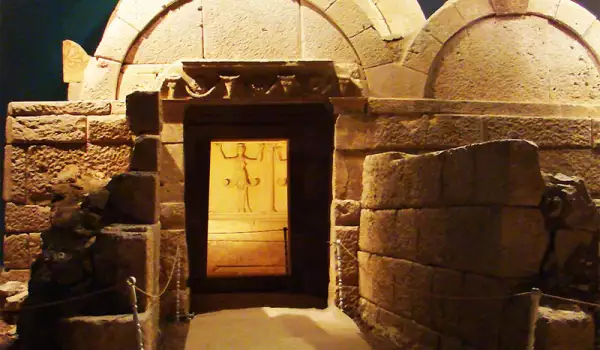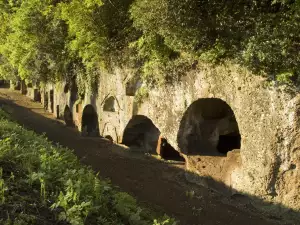Sveshtari Tomb

Sveshtari tomb is one of the nine Bulgarian miracles, among which rank Kazanlak Tomb, Rila Monastery}, [Madara Horseman, Silver Reserve and others. In 1985. Sveshtari tomb becomes part of the List of World Heritage Sites by UNESCO. In essence, Sveshtari tomb a Thracian-Hellenistic royal tomb. It is believed that it was prepared for king Achish Drumihed, who after his death was buried in it. According to calculations by specialists, Sveshtari tomb dates back to 4-3 century bc.
While still robbed in the ancient ages, today Sveshtari tomb still reveals the strength of the traditions of the Thracians.

There are quite mystical and intriguing legends about Sveshtari tomb, which make it particularly attractive in the present. One legend says that around two thousand three hundred years ago the ruler of a Thracian tribe asked them to prepare a home for the eternal afterlife.
Built his large stone tomb with three separate chambers. During the molding inner walls of the tomb were covered with paintings and sculpture, the ruler suddenly died. So the tomb was closed with his remains and all the wonderful gifts. Above it was built then a mound, which was as tall as a four-storey building. There are posts that this is the reason some of the murals in Sveshtari tomb are not completely finalized.
Sveshtari tomb is among the 100 national tourist sites of the Bulgarian Tourist Union. It is located 3 km southwest of Sveshtari and 43 km northeast of Razgrad. Excavated tomb Sveshtari is not isolated. Along a 2 km stretch are 26 mounds of varying sizes. The whole area around Sveshtari tomb is declared an archaeological reserve because of the great archaeological heritage, which it owns.
Sveshtari tomb was found during excavations of the high hill near Sveshtari in 1982.Built of smooth-cut stone blocks of soft limestone. Main Sveshtari mound contains a corridor and three square chambers: an anteroom, and a burial chamber, covered with a semi-cylindrical vault. The entrance is decorated with pillars with Ionic capitals. Above the stairs can be seen a resting plate with a relief frieze of ox heads, rosettes and garlands.
The walls of the chamber of Sveshtari tomb are shaped like columns, such columns are closely adjacent to the wall. Blocks under the arches are supported with 10 female figures called caryatids. Each is about 1 high, 20 meters, are depicted with raised arms.
The figures of women are dressed in long, finely pleated sleeveless garments, girded in the chest with a belt. End of clothes is highly folded and shaped as a flower. Figures in Sveshtari tomb have long curly hair that descends down the shoulders. Heads of women finish with baskets, which are called kalatos. In the past, these figures were colored, and until now has remains their 1ast Chestnut paint.
In Sveshtari tomb are found the bones of five horses that were hacked here. This was the ritual of the Thracians. Horses had to accompany his master into the next world. In the burial chamber were found two stone beds, human bones and funerary gifts. By one of the beds is sculptured a facade of a miniature temple. All this shows that is imminent deification or so-called heroisation the late ruler. Ornaments of Sveshtari tomb remain unfinished.
The site is part of a movement created in 1966 called the 100 National Tourist Sites Bulgaria.















